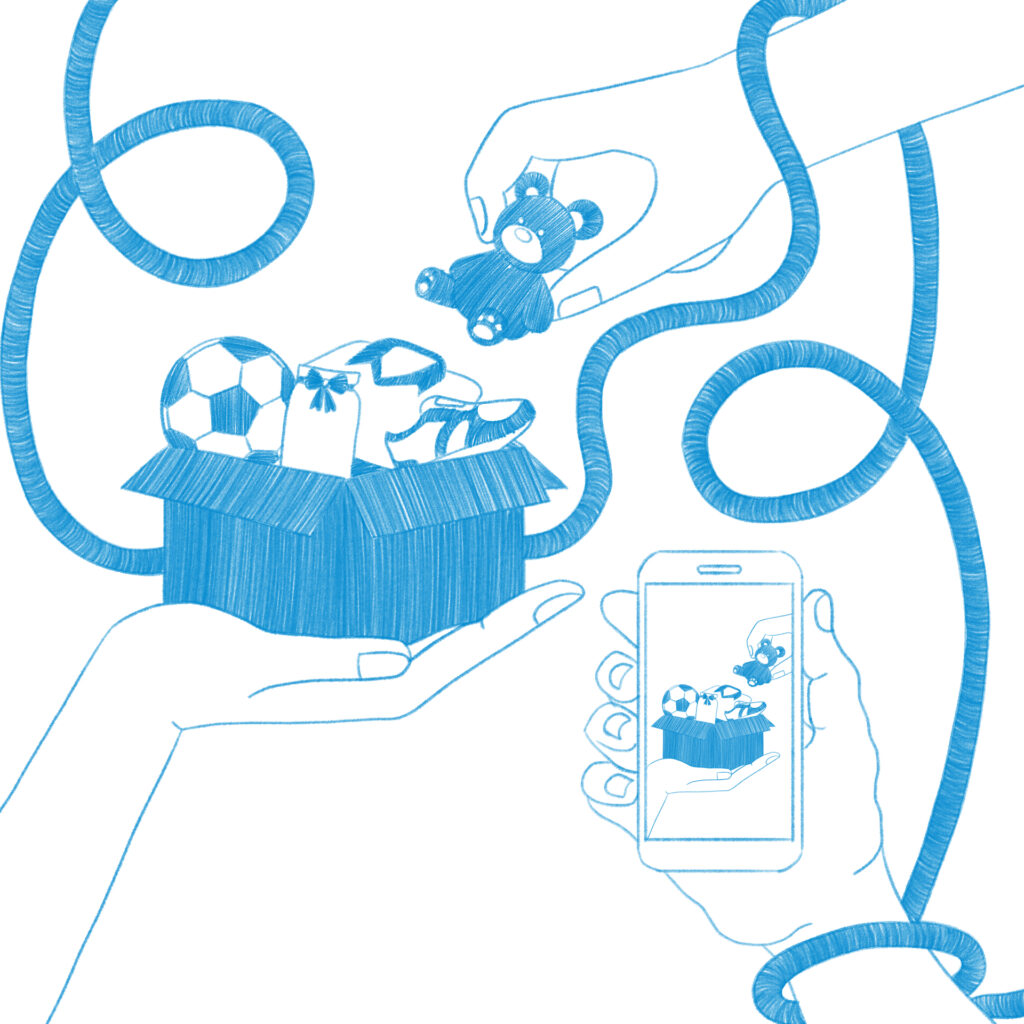MULTILINGUALISM AND AWARENESS OF CULTURAL DIFFERENCES

Illustration: Studio Permanent
Charity is a universal human value, one of the most important attributes of society. It is about humanity and sensitivity, closeness and solidarity, support and willingness to help others. Social media is playing a huge role in how time, money, resources and awareness are being spread around the world today to help those in need. By using social networks we save our time and have faster mobilisation, but social media has also become the tool through which charity is used as a marketing tool.
“True charity does not need cameramen, reports, photos and TV studio decorations for great heroics,” says journalist Mentor Kika. In modern times, we have mediatism of charity, in the sense that it is often a ‘show’ and marketing with the misery and misfortune of the other person. Humanism has turned into a means of promoting oneself, certain groups or organisations, while the media and social networks are an “arena” where the promotion becomes public. Individuals, different groups or certain organisations are increasingly using the “tear” of others in miserable conditions to purify themselves. Personal promotion through acts of charity is an ugly act as it implies making fun of another person’s misfortune. The images and photos that are published on social networks or in the media of “humanists”, with poor children, half naked (due to lack of clothes) and not eaten, are one of the ways that the charity uses the media to attract donors or vice versa how the media uses the charity to attract viewership, followers or more advertising.
In an interview conducted with the sociologist Labinot Konushefci, he says that “As much as charity can be humane, it can also be misused and instrumentalized in forms of marketing and ideology. People do marketing to achieve various profit, personal, careerist, capitalist, political goals, but charity is often used to create an acceptable human identity in society. If marketing is done for humanitarian purposes, promoting humanity and promoting charity, cultivating charity as a value, this is acceptable. But it is often misused for profitable purposes, to promote individuals, foundations, organisations and certain businesses, in an undeserved manner”.
Charitable organisations or individual humanitarian initiatives have made it a habit to display any activity on social networks, even social media have become golden opportunities that anyone, depending on what they donate (even very small things) to people in need, can make it public. The thirst for mediaism, protagonism and heroism means that poor people are deprived of any kind of dignity. Showing the image of children without the permission of the family or just to achieve a level of viewership is a violation of children’s rights and denigration of human dignity. Organisations or initiatives that aim to do charity use photos/videos or news as their tool. Photos/videos on social networks can influence the attitudes and behaviours of the audience depending on what they reflect, sadness or happiness, they create emotionality in the virtual audience. Like sad faces, happy faces also affect people’s emotional appeal. Images that convey distress increase in people’s emotions such as guilt and sadness. The impulse to avoid negative emotions such as guilt leads people to donate money or material things to quell unhappy feelings. Publicity that is done using children has an impact on the audience and helps to raise funds faster, in the form that when people see children happy after receiving a home or help that has been done for them, when they see the enthusiasm and their happiness they feel more willing to help someone while sad children reflect pain and sadness on people, increases their emotionality towards humanitarian aid.
In a questionnaire carried out by me, to which 50 respondents (citizens of Kosovo) answered, they think that we have misuse of charity from social media and not only. Most of the respondents have been ‘prey’ of false appeals for charity from social media, while a small part of the respondents consider that appeals for charity that are made through social media are only aimed at viewership, followers and advertising. The largest percentage of respondents answered that they very often help people in need through social networks. They also showed some of the ways they use them, some of the respondents’ answers were; I shared the news on my official profile or to my friends. I made a status on Facebook explaining my friend’s health situation, and called for help’ or ‘I sent money to the needy family’s bank account right after I saw on Instagram that they needed food.’In conclusion, in modern times we have digitalization of charity and its use as a marketing tool. The misuse, exploitation and promotion of charity that takes place in social media is a phenomenon that is happening by certain persons or groups for the purpose of personal, profitable benefits.
About the author: Blerta Zagragja – a sociologist graduated at the bachelor’s level, at the same time a student at the master’s level in the Department of Sociology.
This project is supported by the Ministry of Culture, Youth and Sports
